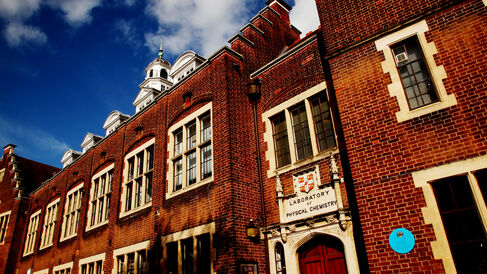History of the Building

The Perse School
The Whipple Museum is partially housed in a large hall with Jacobean hammer-beam roof-trusses, built in 1618 as the first Cambridge Free School. The Main Gallery of the Museum is the original hall of the Perse School, founded as a bequest by Stephen Perse, a fellow of Caius College. The building was completed in 1628 and was described by Nikolaus Pevsner in his 1954 architectural guide to Cambridgeshire as:
"a fine large room with a hammer beam roof. The pendants are as bulbous as Jacobean Bedposts and the spandrels have open work decoration of a scroll type."
Housing the Fitzwilliam Collection
The school consisted of the main hall and two wings, projecting from each end onto Free School Lane and forming a small courtyard. During the early 19th century the school was neglected by the trustees and lost pupils to such an extent that the Fitzwilliam Collection could be housed in the Perse Hall from 1816 until 1842 when the Fitzwilliam Museum was opened. In the mid-19th century the school began to flourish again and a junior wing was added following the style of the Main Hall. This has been divided to provide a mezzanine floor and forms the Museum's side galleries.
The University
In 1890 the school moved to new premises and the old building was sold to the University of Cambridge. This purchase was part of a massive expansion on the New Museums Site (which included construction of the Cavendish Laboratory next door). This photograph was taken in 1910 when the Perse Room was the Electrical Laboratory in the Department of Engineering; later it became part of the Department of Physical Chemistry. Evidence of this former use is still visible on the outside of the building where the words 'Laboratory of Physical Chemistry' can be seen carved above the front door.
The Whipple Museum
The Department of History of Science acquired the Perse Room in 1956 to house the Whipple Collection. The final bay was partitioned off to form an office, with another office above at mezzanine level; the library was also housed in part of the museum. In 1973-5 extensive work restored the Perse Room to its original form and created a new library for the growing Department of History and Philosophy of Science.
